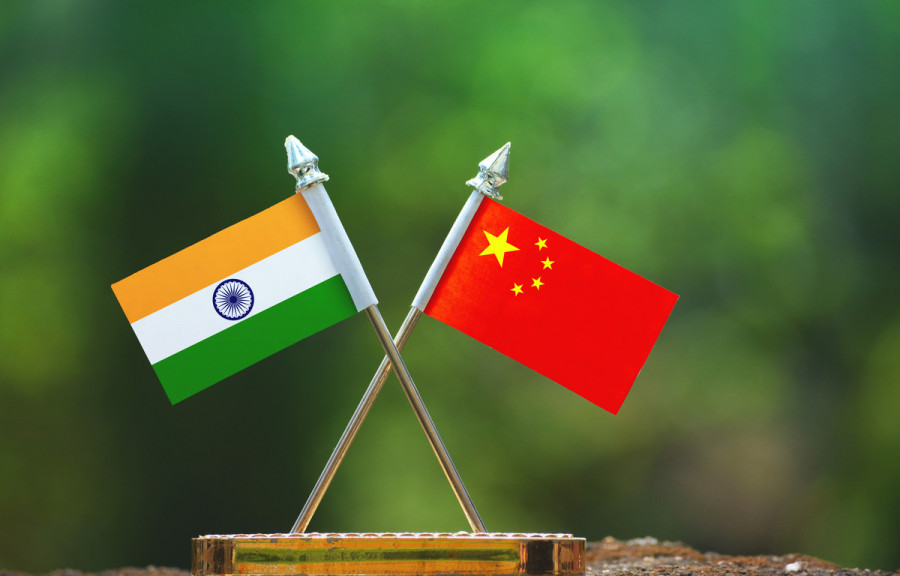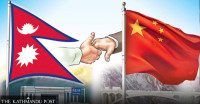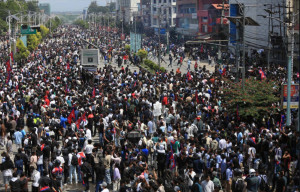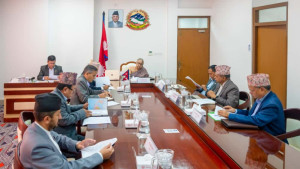Columns
China-India rivalry in the Indian Ocean
Smaller countries in the region play a vital role in determining the extent of their domination.
Smruti S Pattanaik
Several developments in the recent past in the western Indian Ocean indicate how the states of the region are reasserting the domination of their strategic space as the geopolitics of the Indian Ocean intensifies. As the news of India replacing its defence personnel with civilian technical staff to operate the Dornier aircraft and two helicopters that India has gifted to the Maldives came in, there were reports that on March 4, the Maldives and China signed a defence agreement. Prior to this, on March 2, India inaugurated its second full-fledged naval base, INS Jatayu on Lakshadweep's Minicoy island, upgrading what was earlier a naval detachment. This base is 130 kilometres from the Maldives and will give India a vantage point to monitor the waters off the East Coast of Africa.
Dominating the Indian Ocean
India has been sprucing up its naval capacity in recent years. Its first tri-service base, the Andaman & Nicobar Command, will overlook the strategic Malacca Strait. The Indian Ocean islands are also trying to extract concessionary loans and development projects by renting strategic facilities to dominant powers. India is already developing a facility on North Agaléga Island in Mauritius by investing $250 million under its Security and Growth for All in the Region (SAGAR) programme.
Indian Prime Minister Narendra Modi and his Mauritius counterpart, Pravind Kumar Jugnauth, virtually inaugurated an airstrip and a jetty on the Mauritius island on February 29, 2024. The airstrip would reportedly help Dornier aircraft operations. This airstrip will likely enhance the air and sea connectivity of the Mauritian Defence Force to safeguard their interests in the country’s outer island. Like the Maldives, the opposition in Mauritius also started a campaign saying that India is developing a military base, an accusation rejected by the Mauritian prime minister. Other media reports mention India’s naval base, which both countries have rejected.
The Chinese punch
Notably, China’s interest in the Indian Ocean is growing. Since 2009, the Chinese naval fleet’s visit to the port of Aden has signalled its naval outreach. Unlike its often-quoted past posture, it is not interested in overseas bases; it now has a military facility in Djibouti that opened in 2017. The growing geostrategic competition also makes these small island countries strategically relevant. They also benefit from the aid and assistance that flow in to make the regime happy. However, the debt burden in Sri Lanka costs the regime’s longevity. The maritime silk route has also helped enhance China’s presence through port-led infrastructure.
China also has a presence in Mauritius, and it is believed that Huawei, the Chinese telecom company, has built a 700-kilometre submarine cable providing high-speed data to the second-largest Mauritian island, Rodrigues. It also provided a $350 million loan to the Mauritian telecom company for the Safe City project without competitive bidding.
In Sri Lanka, China already has Hambantota Port on a 99-year lease. Touted as a commercial investment, this port can be converted into a strategic facility. China has recently signed a defence agreement and is going to extend ‘military assistance gratis,’ which is reportedly nonlethal weapons.
Marcel Maus, a French sociologist and anthropologist, famously said, “Gifts are given and repaid under obligation”. Therefore, there is nothing that can be called a free gift. States often use aid to further their interests. It is important to understand what the Maldives’ move entails and what the expectations of China and other countries from Muizzu’s administration are due to the evident geopolitical shift in Maldivian foreign policy. While two of the world’s largest recipients of Chinese weapons are Pakistan and Bangladesh, Beijing continues to sell weapons to other countries in the region. The Maldives receiving free military assistance is interesting.
The Maldivian drama
The shift in the Maldives’ foreign policy is subject to the government of the day and anchored to the country’s interests. Yet, their domestic political constituencies dictate the two dominant political parties’ trajectory in foreign policy. While the Progressive Party of Maldives (PPM) has always followed a demonstrative policy of courting China, its domestic political campaign has always targeted India. The Maldives Democratic Party (MDP), though, in the 2018 election, flagged the growing debt burden from China. Once in power, Ibrahim Mohamed Solih tried to balance the interests of both China and India. Muizzu is following Yameen in his foreign policy posture. On March 3, it got surveillance drones—Bayraktar TB2—from Turkey to patrol its vast exclusive economic zone. Reportedly, the Maldives spent $37 million (MVR 569.8 million) on them. This money was allocated from the state’s contingency budget.
As the first batch of Indian military personnel left the Maldives on March 11 as a part of a planned withdrawal, India’s Minicoy base is to demonstrate that it will develop its capacity on home ground rather than depend on the mercy of smaller countries where India is being pulled into domestic politics to prove a point to the opposition. Increasingly, elections are being fought on issues of sovereignty vis-à-vis India. India’s engagement with regimes has been an issue in the Maldives, Nepal, Bangladesh, and Sri Lanka, where sovereignty issues are entwined with India’s investment and bilateral relations.
This is where China tries to project itself as a defender of the sovereignty of these nations by increasing its investment and military cooperation and bringing China-friendly political parties together. For instance, on March 12, China’s Foreign Ministry spokesperson Wang Wenbin said, “China supports the Maldives in safeguarding its territorial sovereignty and carrying out friendly cooperation with all sides on the basis of independence.”
Gathering storm?
Chinese assertion in the Indian Ocean region is attributed to the United States Indo-Pacific Strategy and strategic convergence between India and the US over various issues. China’s intrusion into India’s northern border, its strategic collaboration with Pakistan, and its frequent vetoes of terrorist groups that India wants to place on the UN sanction list of global terrorists are manifestations of China’s approach to India.
China Indian Ocean Region Forum is an attempt to consolidate its geo-strategic presence. India is also strengthening its ties with Indian Ocean nations through capacity building, naval exercises, maritime domain awareness and first responder in the region in times of crisis. The Colombo Security Conclave is a forum for enhancing deeper ties among the nations of the Indian Ocean with India.
While India is a resident country in the Indian Ocean Region, China has justified its presence through a string of pearls, ostensibly to protect its increasing volume of commerce that passes through the Indian Ocean. India believes that China’s investment in Pakistan’s Gwadar and Kyaukphyu Port in Myanmar will give it a strategic regional advantage and bolster its surveillance. Chinese spy ships are a major concern for India. As major powers compete to protect their interests in the Indian Ocean region, it is the smaller Indian Ocean countries that will be important players in determining the extent of domination of global powers in the periphery.




 17.12°C Kathmandu
17.12°C Kathmandu















